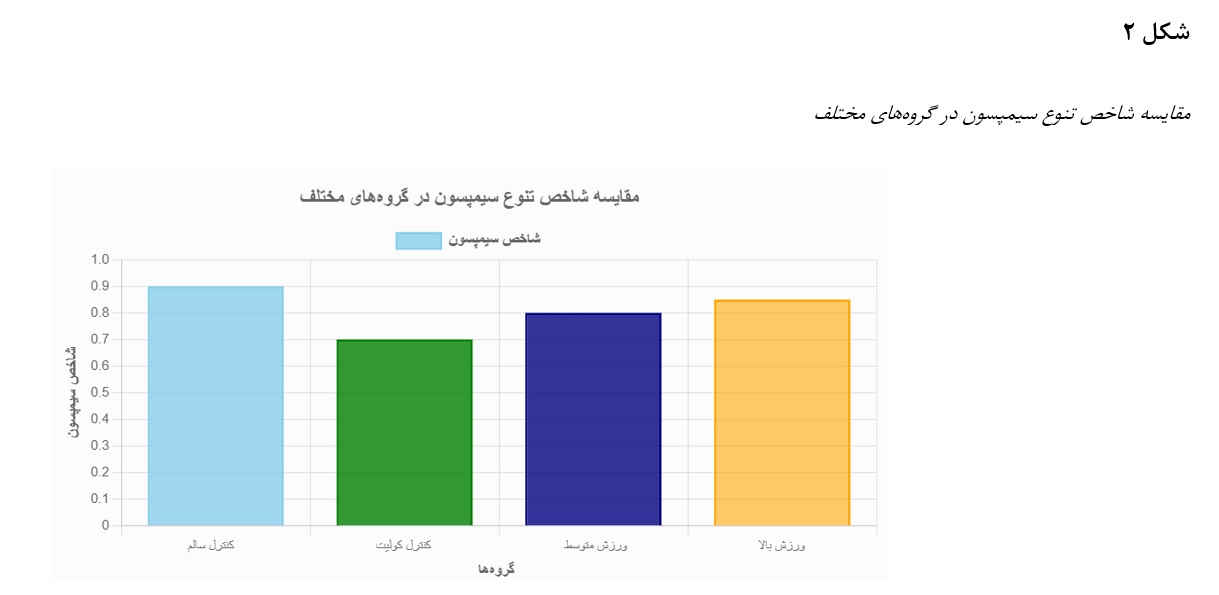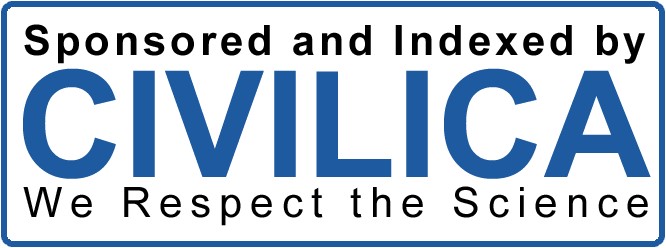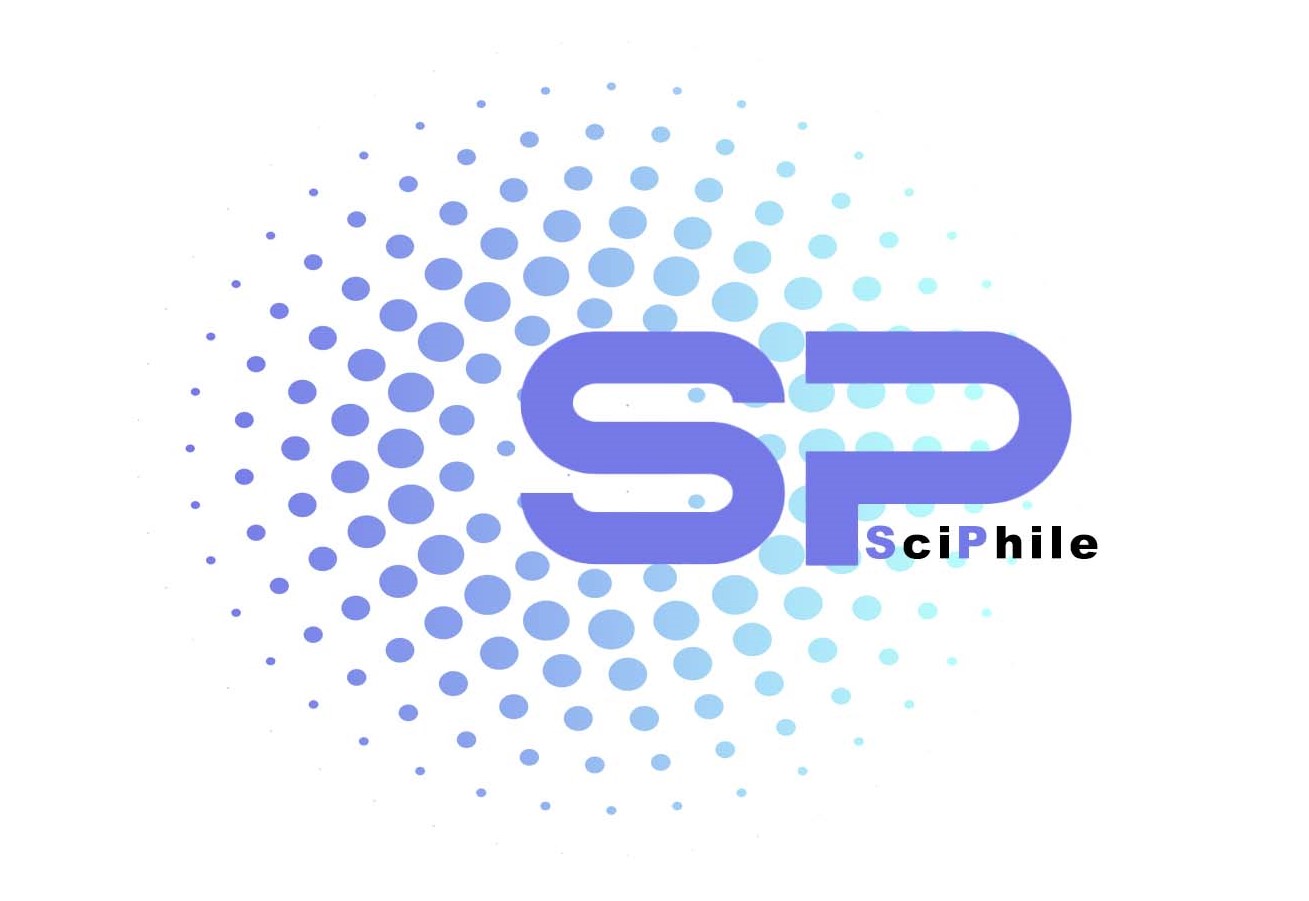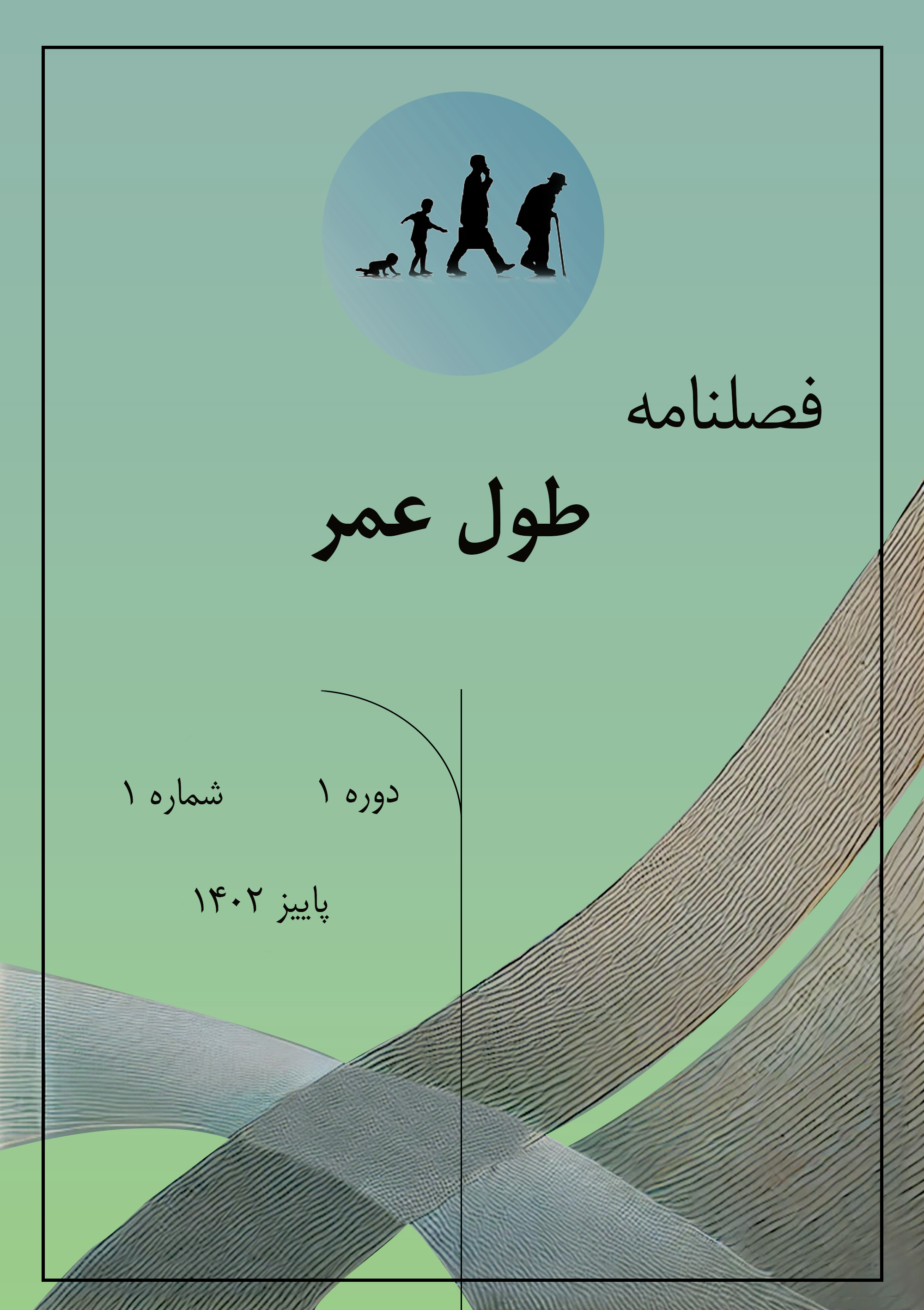تأثیر مداخلات هوازی با شدت بالا و متوسط بر تنوع و عملکرد میکروبیوم روده: بررسی تغییرات Lactobacillus، Bifidobacterium و Escherichia coli در موشهای مسن
کلمات کلیدی:
میکروبیوم روده, ورزش هوازی, کولیت, سالمندی, باکتریهای پروبیوتیکچکیده
این مطالعه با هدف بررسی اثرات تمرینات هوازی با شدت بالا (۸۵-۱۰۰٪ VO2max) و متوسط (۷۰-۷۵٪VO2max) بر تنوع میکروبی (شاخصهای شانون و سیمپسون) و جمعیتLactobacillus، Bifidobacterium، و E. coli در موشهای مسن با کولیت القاشده با دکستران سولفات سدیم (DSS) انجام شد. در این مطالعه تجربی با طراحی تصادفی کنترلشده، ۳۲ موش نر ویستار (سن ۱۸ ماه) به چهار گروه (کنترل سالم، کنترل کولیت، ورزش شدت بالا، و ورزش شدت متوسط) تقسیم شدند. کولیت با DSS (۲-۳٪) به مدت ۷ روز القا شد. تمرینات هوازی ۸ هفته (۵ جلسه در هفته) روی تردمیل اجرا شد. تنوع میکروبی با توالییابی 16S rRNA و qPCR و کشت انتخابی برای Lactobacillus، Bifidobacterium، و E. coli ارزیابی شد. دادهها با ANOVA دوطرفه و آزمون t مستقل تحلیل شدند (≤p۰.۰۵). کولیت باعث کاهش شاخصهای شانون (۲.۵ ± ۰.۳) و سیمپسون (۰.۷ ± ۰.۱)، کاهش Lactobacillus و Bifidobacterium، و افزایش E. coli شد (<p ۰.۰۰۱). ورزش شدت بالا و متوسط تنوع را بهبود بخشید (شانون: ۳.۲ ± ۰.۲ و ۳.۰ ± ۰.۲) و Lactobacillus و Bifidobacterium را افزایش و E. coli را کاهش داد (<p ۰.۰۰۱). شدت بالا اثرات قویتری داشت (=p ۰.۰۴ برای Lactobacillus). تمرینات هوازی، بهویژه با شدت بالا، تنوع میکروبیوم و تعادل باکتریایی را در موشهای مسن بهبود میبخشند و میتوانند استراتژی غیر دارویی برای مدیریت التهاب روده باشند.
مراجع
Allen, J. M., Mailing, L. J., Niemiro, G. M., Moore, R., Cook, M. D., White, B. A., Holscher, H. D., & Woods, J. A. (2018). Exercise alters gut microbiota composition and function in lean and obese humans. Medicine & Science in Sports & Exercise, 50(4), 747-757. https://doi.org/10.1249/MSS.0000000000001495
Aya, V., Jimenez, P., Muñoz, E., & Ramírez, J. D. (2023). Effects of exercise and physical activity on gut microbiota composition and function in older adults: A systematic review. BMC Geriatrics, 23(1), 364. https://doi.org/10.1186/s12877-023-04056-4
Bolte, L. A., Vila, A. V., Imhann, F., Collij, V., Gacesa, R., Peters, V., & Weersma, R. K. (2021). Long-term dietary patterns are associated with pro-inflammatory and anti-inflammatory features of the gut microbiome. Gut, 70(7), 1287-1298. https://doi.org/10.1136/gutjnl-2020-322670
Clauss, M., Gérard, P., Mosca, A., & Leclerc, M. (2021). Interplay between exercise and gut microbiome in the context of human health and performance. Frontiers in Nutrition, 8, 637010. https://doi.org/10.3389/fnut.2021.637010
Conley, M. N., Wong, C. P., Duyck, K. M., Hord, N., Ho, E., & Sharpton, T. J. (2016). Aging and serum MCP-1 are associated with gut microbiome composition in a murine model. PeerJ, 4, e1854. https://doi.org/10.7717/peerj.1854
De Vos, W. M., Tilg, H., Van Hul, M., & Cani, P. D. (2022). Gut microbiome and health: Mechanistic insights. Gut, 71(5), 1020-1032. https://doi.org/10.1136/gutjnl-2021-326789
Hoshino, D., Y., Y., Y., K., H., H., & A., B. (2015). High-intensity interval training increases intrinsic rates of mitochondrial fatty acid oxidation in rat red and white skeletal muscle. Appl Physiol Nutr Metab, 38(3), 326-333. https://doi.org/10.1139/apnm-2012-0257
Høydal, M. A., Wisløff, U., Kemi, O. J., & Ellingsen, O. (2007). Running speed and maximal oxygen uptake in rats and mice: practical implications for exercise training. European journal of cardiovascular prevention and rehabilitation, 14(6), 753-760. https://doi.org/10.1097/HJR.0b013e3281eacef1
Huynh, U., & Zastrow, M. L. (2023). Metallobiology of Lactobacillaceae in the gut microbiome. Journal of Inorganic Biochemistry, 238, 112023. https://doi.org/10.1016/j.jinorgbio.2022.112023
Ramos, C., Gibson, G. R., Walton, G. E., Magistro, D., Kinnear, W., & Hunter, K. (2022). Systematic review of the effects of exercise and physical activity on the gut microbiome of older adults. Nutrients, 14(3), 674. https://doi.org/10.3390/nu14030674
Shanahan, F., Ghosh, T. S., & O’Toole, P. W. (2021). The healthy microbiome-what is the definition of a healthy gut microbiome? Gastroenterology, 160(2), 483-494. https://doi.org/10.1053/j.gastro.2020.09.057
Varghese, S., Rao, S., Khattak, A., Zamir, F., & Chaari, A. (2024). Physical exercise and the gut microbiome: A bidirectional relationship influencing health and performance. Nutrients, 16(21), 3663. https://doi.org/10.3390/nu16213663
Vijay, A., & Valdes, A. M. (2022). Role of the gut microbiome in chronic diseases: A narrative review. European Journal of Clinical Nutrition, 76, 489-501. https://doi.org/10.1038/s41430-021-00991-6
Yazdan Nasab, A., Mirzaei, R., & Dehghani, S. (2023). A Review of the Impact of Exercise on the Gut Microbiota of Elderly Individuals. Journal of Sports Science and Health, 8(2), 70-83.
Zhong, F., Wen, X., Yang, M., Lai, H. Y., Momma, H., Cheng, L., & Huang, C. (2021). Effect of an 8-week exercise training on gut microbiota in physically inactive older women. International Journal of Sports Medicine, 42(07), 610-623. https://doi.org/10.1055/a-1308-3323

دانلود
چاپ شده
ارسال
بازنگری
پذیرش
شماره
نوع مقاله
مجوز
حق نشر 2025 آرزو کلانتری (نویسنده); سعید کشاورز; الله یار عرب مومنی, لیلا صرامی (نویسنده)

این پروژه تحت مجوز بین المللی Creative Commons Attribution-NonCommercial 4.0 می باشد.









